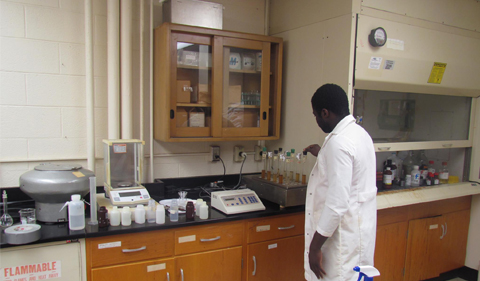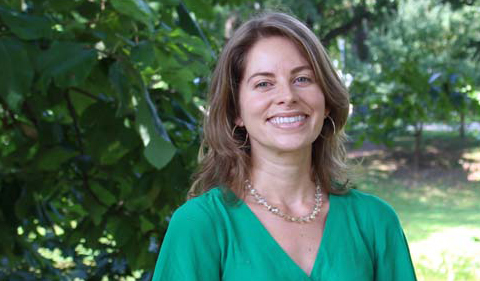
Bali collects water samples from La Barra de Santiago marsh in El Salvador
Ohio University Geologists Dr. Dina López and Abioudun Emmanuel Ayo-Bali M.S. ’19 want to know why the fish population recovered—but not the macroinvertebrates—in water contaminated by a 2005 volcanic eruption in El Salvador.
When the Santa Ana volcano erupted, emitting ash and gases in 2005, the ash fell preferentially to the west and southwest of the volcano, contaminating the watersheds of streams that discharge into La Barra de Santiago marsh, one of the most important mangrove forests of the country due to its diversity. This area has been deeply impacted by other environmental problems such as deforestation and sugar cane plantations.
After the eruption, part of the ash was transported by streams to the marsh, increasing sedimentation and destroying aquatic life. With the passage of time, the fish population seems to have recovered, but not the macroinvertebrate population.
So López, Professor of Geological Sciences, and Ayo-Bali, a graduate student from Nigeria, designed a project to investigate water quality in the La Barra de Santiago marsh and adjacent streams.

Bali analyzes the geochemistry of the water samples back at the research lab in Clippinger Hall
López and Ayo-Bali traveled to El Salvador in May to collect water and sediment samples in the marsh and adjacent streams.
Ayo-Bali is now analyzing the samples in the geochemistry laboratory to determine nutrients, sulfate, and heavy metal concentrations. He hopes to determine whether the concentrations of these chemicals are high enough to decrease the environmental quality for the growth of macroinvertebrates, as well as the possible origin of the contaminants.
“My keen interest in understanding the dynamic nature of the earth’s surficial processes informed my decision to work on this project,” he notes. “I am very interested in identifying the boundaries between natural and anthropogenic contributions in environmental pollution.”



















Comments